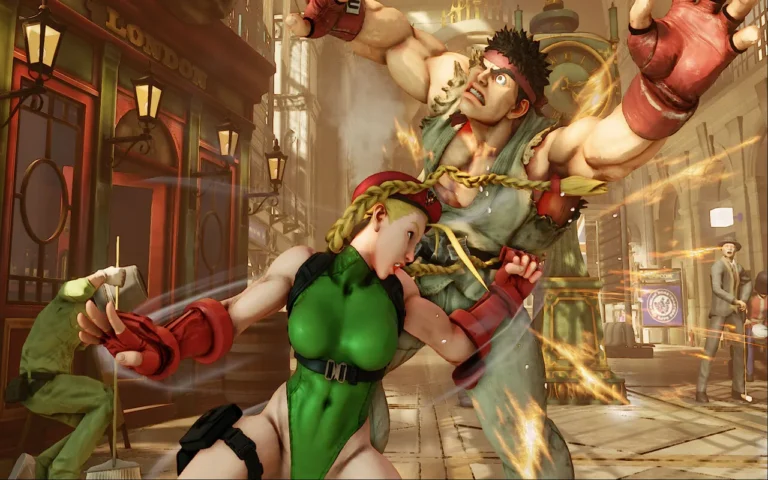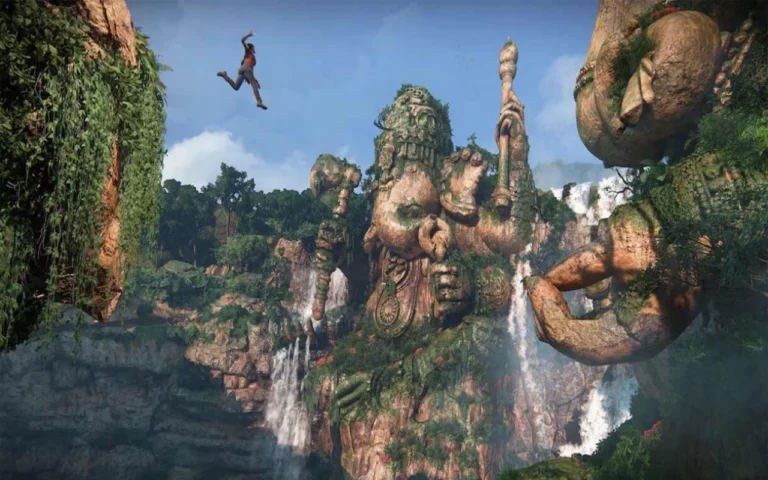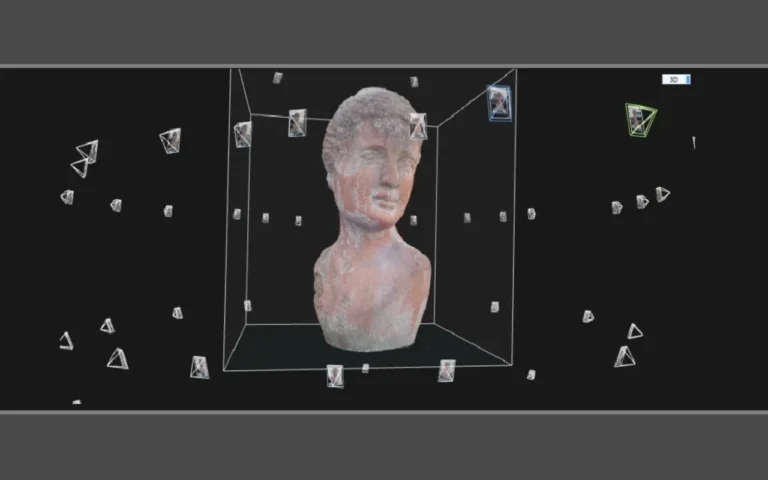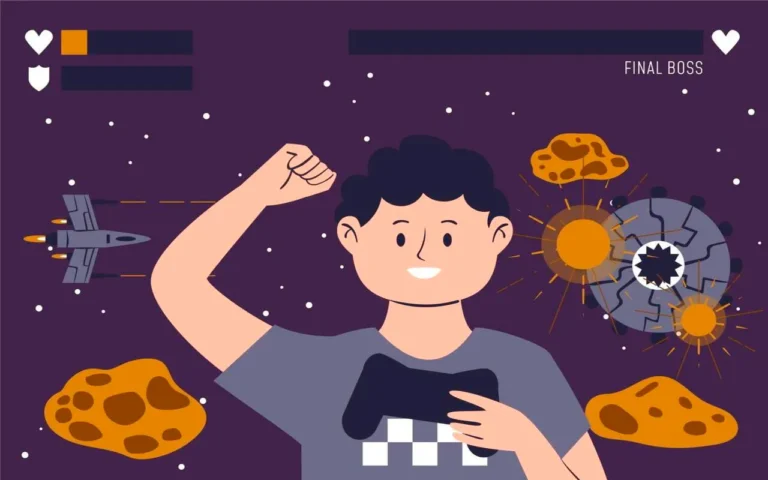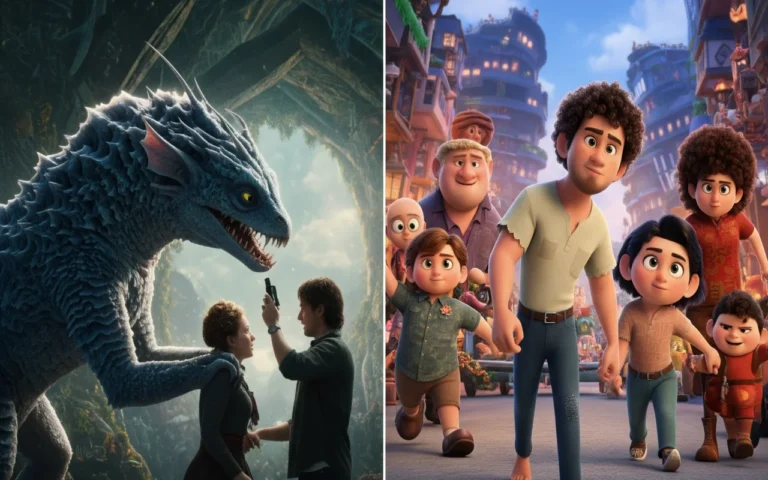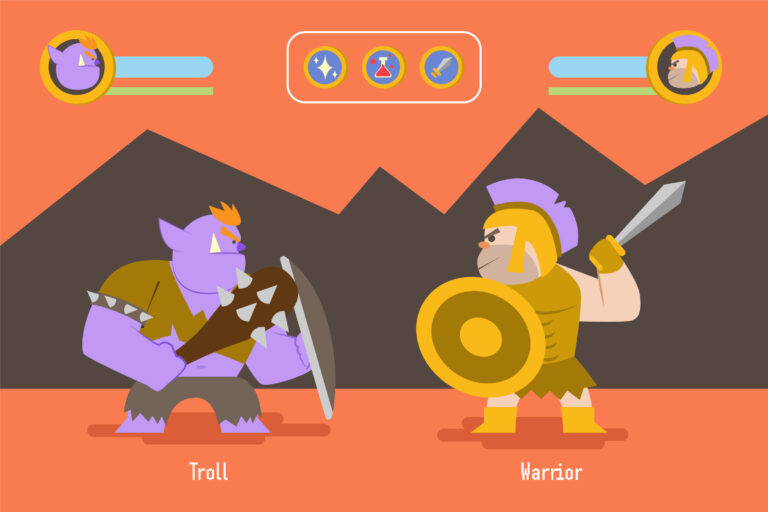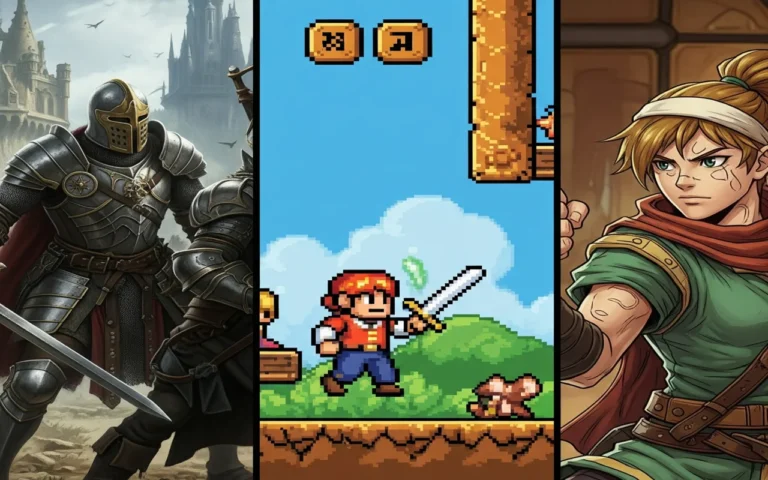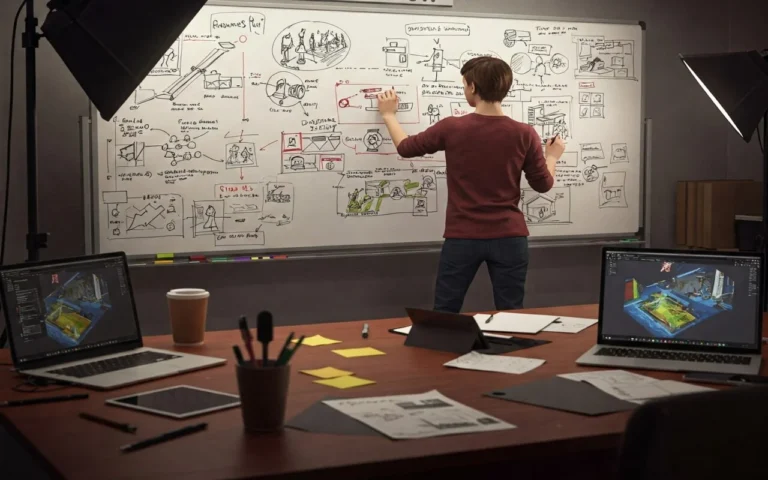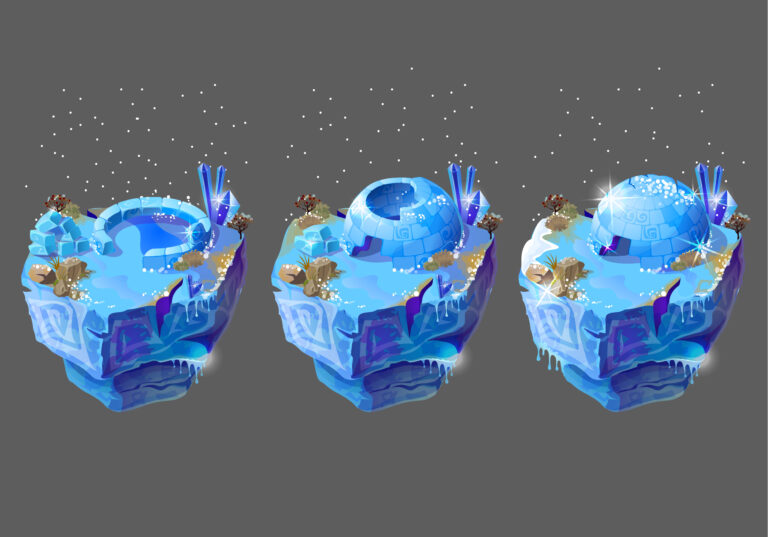Visual storytelling in video games mixes artistry with narrative design to craft unforgettable experiences.
Visual storytelling in games is primarily the art of using character design, environmental storytelling, and cinematic techniques to convey emotions and stories.
Unlike passive media experiences, video games leverage player autonomy to target emotional engagement and player immersion.
From the stunning landscapes of open-world games to the subtle details in a character’s appearance, every aspect of game art contributes to an immersive narrative experience.
In this guide, we will dive deep into game world building, concept art, visual storytelling tools, and videogame storytelling theory, only to show how they can transform gaming narratives and the overall gaming experience.
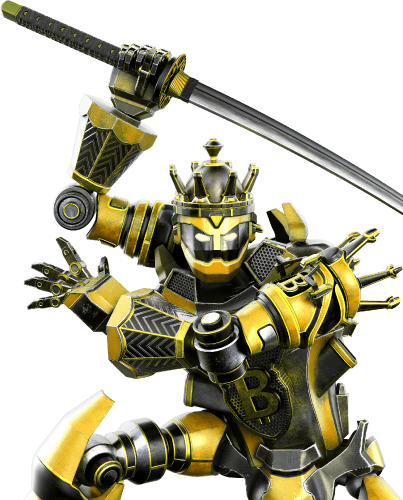

Need Game Art Services?
Visit our Game Art Service page to see how we can help bring your ideas to life!
What Is Visual Storytelling in Art?
To put it in simple words, visual storytelling in games prioritizes showing over telling: It’s defined by using art direction, concept art, and mood boards to create relatable and immersive narratives.
Considering the psychology of storytelling in animation, the artistic aspect, and the overlap of these, it’s amusing to know how every game art sits on the spectrum of visual storytelling.
For example, games like Dark Souls use cryptic environmental cues, such as crumbling ruins or scattered relics, to build mystique and mysterious worlds.
Similarly, Ori and the Blind Forest employs exquisite visuals to provoke wonder, proving that visual storytelling captivates players without words!
Visual cues guide players through stories at their own pace, letting them interact, making player immersion central. Moreover, they artistically entail every detail, from lighting to textures, shapes, and the narrative experience.
How a Game’s Art Style Can Elevate the Storytelling Experience
But how can a game’s art style enhance its storytelling? The game art styles basically define every game’s emotional tone and narrative depth. It’s a cornerstone of narrative design that changes gameplay into a storytelling medium.
Art Style and Mood
Color theory in game art drives an important emotional impact. Warm hues like red imply passion or danger, while cool blues suggest calm or melancholy.
For example, Journey’s shifting palette, from golden deserts to snowy peaks, mirrors its narrative of self-discovery.
Moreover, stylized and realistic game art can alter the emotional weight! Stylized art, like Cuphead’s cartoon aesthetic, evokes nostalgia while reinforcing themes. Whereas, realistic styles, as in God of War, ground players in gritty, emotional tales.
World Building
Art styles shape game world-building. Every visual choice aims to overcome an obstacle amongst the challenges of environmental game design, from buildings to deep forests, every element reflects the world’s history and culture. This makes exploration a fundamental aspect of the game narrative design, which deepens player immersion.
In The Last of Us, overgrown urban ruins and abandoned homes tell a story of the society’s collapse. Whereas Hollow Knight’s dark and hand-drawn tunnels imply isolation and enhance its melancholic lore.
The Role of the Visual Storyteller in Game Development Teams
Every visual storyteller bridges art and narrative, working alongside writers, designers, and developers. They ensure that visual elements are compatible with the story, utilize storyboards, mood boards, and concept art, and manifest new ideas to come to life.
Key Responsibilities of The Visual Storyteller
- Creating concept art to visualize settings and characters.
- Designing characters that reflect personality and backstory through appearances.
- Ensuring a smooth flow, where gameplay mechanics support the story.
Collaboration in Action
For example, in Red Dead Redemption 2, the visual storyteller crafted Arthur Morgan’s rugged look to reflect his outlaw life!
Moreover, dusty environments, trails, and bustling towns mirror the 1890s lore, immersing players in the era.
The visual storyteller also predicts player perspectives and crafts subtle cues accordingly to enrich the narrative without too much exposition.
Tools Every Game Artist Uses for Visual Storytelling
Visual storytelling tools allow artists to craft the worlds of their imaginations. These tools range from software to creative techniques, all striving to enhance narrative design and emotional engagement.
Software and Techniques
The following tools are some of the most widely used animation software around the world, which have constantly empowered artists to craft character design, environmental storytelling, and cinematic techniques.
For Concept Art and Design:
- Adobe Photoshop:
Photoshop is a cornerstone for concept art and texture creation. Its layering system, brush customization, and color adjustment tools allow artists to sketch detailed environments and characters. For example, The Witcher 3 used Photoshop to create early concepts of Geralt’s armor, ensuring his rugged aesthetic matched the game’s gritty tone. - Procreate:
Popular on tablets, Procreate offers a streamlined interface for concept art and mood boards. Its responsive brushes and time-lapse recording make it ideal for iterative design. Hades artists used Procreate to sketch vibrant, mythological characters, aligning with the game’s bold art style.
For 3D Modeling and Animation:
- Blender:
Blender is a free, open-source tool for 3D modeling, rigging, and animation. Its versatility makes it ideal for character design and environment creation. Hellblade: Senua’s Sacrifice used Blender to model Senua’s expressive face, enhancing emotional engagement through subtle animations. - Autodesk Maya:
Maya is an industry standard for 3D animation and rigging. Its node-based workflow supports complex cinematic techniques, like the dynamic cutscenes in God of War. Artists use Maya to animate Kratos’s movements, reflecting his strength and vulnerability.
You can read more about the differences between Maya and Blender to choose your proper platform. - ZBrush:
ZBrush specializes in high-resolution sculpting for character design. Its polypaint feature allows artists to texture models directly, as seen in Horizon Zero Dawn, where Aloy’s intricate armor was sculpted to reflect her tribal roots.
Game Engines for Real-Time Visuals:
- Unreal Engine:
Unreal Engine is renowned for photorealistic rendering and dynamic lighting. Its Blueprint system lets artists prototype environmental storytelling without coding. Gears 5 used Unreal’s Lumen system to create moody, war-torn settings that amplify tension. - Unity:
Unity is versatile for both 2D and 3D games, with a focus on accessibility. Its Shader Graph enables custom visual effects, as in Ori and the Will of the Wisps, where glowing particles create an ethereal atmosphere.
Even though Unity and Unreal Engine are both leading tools in the industry, it’s important that you pick the one that complements your project.
What Is The Game Storytelling Theory?
Videogame storytelling theory suggests how visuals, gameplay, and player agency create cohesive narratives, by which they attract millions of players and an enriched fan base.
Game storytelling theory emphasizes ludonarrative consistency, ensuring mechanics and story align.
Core Principles:
- Environmental storytelling: Settings reveal history, like Dishonored’s plague-ridden Dunwall, with its quarantine zones and graffiti.
- Cinematic techniques: Close-ups in The Last of Us Part II capture emotional nuances, while dynamic cameras in Uncharted heighten action.
- Character design: Visuals convey backstories, like Geralt’s battle-worn armor in The Witcher.
Case Study:
Columbia’s floating city in Bioshock Infinite uses propaganda posters and religious imagery to depict a society of inequality!
This environmental storytelling lets players uncover socio-political themes, showcasing the game’s world-building at its finest.
Expanding the Theory!
Videogame storytelling theory also considers pacing and player choice. Games like Mass Effect use branching narratives to enhance player agency, while What Remains of Edith Finch employs vignettes to explore family histories through interactive visuals. These ever-growing principles ensure stories resonate emotionally throughout time, making every choice and discovery meaningful.
What Are the Components of Visual Storytelling?
There are many aspects to compiling a well-rounded visual production. In the following, we will discuss the major parts that each storyteller artist must deal with:
Environmental Storytelling
By paying attention to the surroundings in the game environment, players can uncover layers of meaning and context that enhance their understanding of the virtual world.
- Worldbuilding Through Design:
The design of a game world reflects its history, culture, and societal structure. - Interactive Elements:
Environmental storytelling often involves interactive elements that encourage exploration. - Symbolism and Metaphors:
The use of symbolic objects or imagery can imply different abstract ideas.
For instance, a recurring picture of a broken clock in a game might symbolize lost time or regret.
- Example:
In The Last of Us, environmental storytelling is used masterfully. Abandoned homes filled with personal belongings, graffiti on walls, and makeshift survivor camps tell stories of the world’s collapse and the people who lived through it.
Check out our article on Environmental Storytelling in Games for a more detailed look at this matter.
Character Design
Artists often go out of their way in the character design process to create stunning personas with different attire and emotionally visible differences to deeply influence their audiences and players.
Some of the mentioned approaches to do so are:
- Costume and Accessories!
A character’s attire reflects their profession, personality, and the world they inhabit. For instance: - Physical Traits:
As cliche as it may sound, scars, tattoos, and unique features can hint at a character’s past! - Color Theory:
Character color palette plays a significant role in defining characters. Warm colors like red and orange can signify passion or aggression, while cooler tones like blue and green might convey calmness, grief, or mystery. - Animation and Movement:
The way a character moves or interacts with their environment can also tell a story. A confident stride might indicate self-assurance, while a hesitant gait could reflect insecurity or fear.
- Example:
Geralt of Rivia from The Witcher series is a perfect example of storytelling through character design. His white hair, battle-worn armor, and dual swords immediately convey his role as a monster hunter and the hardships he’s endured.
Lighting and Mood
The intermittent lighting and shadow can create a dynamic narrative layer, influencing how players perceive the game world.
The following methods are used to set the right tone of lighting for your game:
- Mood and Atmosphere
Lighting is key to establishing the mood of a scene:
Soft, warm lighting creates a welcoming and serene atmosphere.
Harsh, cold lighting can evoke tension or unease. - Directional Lighting
By directing light toward specific elements, developers can guide the player’s attention to important areas or objects. - Dynamic Lighting
Changing lighting conditions, such as flickering lights or moving shadows, can add a sense of realism and urgency to a scene. - Color Temperature
Colors in lighting influence emotional responses:
Warm tones (red, orange) often evoke feelings of safety or nostalgia.
Cool tones (blue, green) might suggest melancholy or danger.
- Example:
The haunting, shadow-filled environments of Inside use lighting to create a sense of dread and tension, perfectly complementing the game’s dark narrative.
Effective Camera Techniques
The following methods can help you convey information and emotions, whether in cinematics or gameplay.
- Close-Ups:
These focus on a character’s facial expressions or small details, emphasizing emotions or critical clues. - Wide Shots:
Used to showcase expansive environments or establish the scale of a situation, wide shots are especially effective in open-world games. - Low Angles:
Positioning the camera below the subject can make characters or objects appear more powerful and intimidating. - Dynamic Movement:
In fast-paced sequences, dynamic cameras (e.g., shaky cam) can heighten tension and immersion.
- Example:
The cinematic camera work in The Last of Us Part II uses close-ups to capture subtle emotional nuances, making the storytelling deeply personal and immersive.
Cutscenes and Cinematics
While gameplay is interactive, these sequences often serve as the glue that binds the story together. The following components contribute to the seamless flow of a visual experience:
- Blending Gameplay and Cinematics:
Well-integrated cutscenes transition seamlessly from gameplay to help maintain immersion. - Cinematic Techniques:
Borrowing techniques from film, such as focus shifts, montages, and slow motion, can add drama and depth to characters or environmental graphics. - Character Development:
Cutscenes often reveal character motivations and relationships, enriching the player’s emotional investment in the gameplay.
- Example:
The Uncharted series excels in blending gameplay with cinematic sequences, using action-packed cutscenes to deepen the story while keeping players on the edge of their seats.
UI/UX Design
As a bridge between developers and players, the game UI/UX design makes up a great deal of the gameplay experience through several factors:
- Thematic Consistency:
The UI should match the game’s aesthetic. For example, a medieval fantasy game might feature scroll-like menus, while a cyberpunk game might use holographic overlays. - Minimal Intrusion:
UI elements should be intuitive and non-intrusive, allowing players to focus on the story without distractions. - Narrative Hints:
UI design can include subtle storytelling elements, such as mission logs that provide backstory or visual indicators that reflect the character’s status.
- Example:
In Dead Space, the health bar and inventory are seamlessly integrated into the protagonist’s suit, maintaining immersion without breaking the fourth wall.
Techniques and Best Practices in Game Art Storytelling
Creating compelling visual storytelling requires a mix of creativity and technical skill.
Here are some techniques and best practices for developers and aspiring artists:
Techniques:
- Storyboards: Visual planning helps you outline scenes before development.
- Silhouettes: Ensuring characters and objects are recognizable even at a distance.
- Dynamic Animations: Subtle animations, like swaying trees or flickering lights, bring scenes to life.
Best Practices:
- Collaboration: Writers, artists, and developers must work together to align the narrative and visuals.
- Iteration: Constant refinement of concept art and prototypes ensures quality.
- Be the player: Play out your scene and consider how players will interpret visual cues.
Case Studies in Visual Storytelling in Game Art
Now, let’s explore some of the beloved visual storytelling in game art to comprehend how they have developed such stunning and memorable experiences!
The Last of Us Part II
Frequently mentioned in the preceding sections, Naughty Dog’s The Last of Us Part II is a powerful example of visual storytelling.
The game’s environments, character designs, and animations convey deep emotional narratives without relying heavily on dialogue.
The ruined cities, overgrown landscapes, and personal artifacts scattered throughout the game tell a story of loss, revenge, and redemption.
The detailed facial expressions and body language of the characters further enhance the emotional impact, making the story resonate with players on a profound level.
Journey
Journey has no dialogue! This indie game relies entirely on visual and auditory storytelling.
The shifting landscapes, character interactions, and evolving colors narrate a story of exploration and self-discovery.
Red Dead Redemption 2
Rockstar Games’ Red Dead Redemption 2 is a masterclass in visual storytelling.
The game’s environments—spanning lush forests, barren deserts, and bustling towns—are rich with detail that immerses players in the late 1800s American frontier.
Arthur Morgan’s character design, from his rugged clothing to his expressions of physical decline later in the story, also enhances the player’s emotional connection.
Hellblade: Senua's Sacrifice
Hellblade: Senua’s Sacrifice by Ninja Theory uses visual storytelling to explore themes of mental illness and psychosis.
The game’s art style, which combines realistic character models with a dark, surreal environment, immerses players in Senua’s distorted reality.
Visual effects, such as the flickering shadows and haunting visions, effectively convey her inner turmoil.
The game’s use of visual symbolism and environmental cues helps players understand and empathize with Senua’s struggle.
Shadow of the Colossus
This game uses its vast, desolate landscapes to evoke themes of isolation and melancholy.
The visual storytelling in Shadow of the Colossus lies in its scattered environment design, where the absence of dialogue or text allows players to interpret the story through the imaginative world itself.
The design of the colossi, each unique and majestic, also reflects the mystery and tragedy of the game’s narrative.
To Sum Up
Visual storytelling in game art is a blend of creativity, technical skill, and narrative insight. It transforms games into immersive experiences where players can explore, interpret, and connect with stories on a deeply personal level.
From the visible techniques of character design to the subtle changes in lighting and the richness of environmental details, every visual element contributes to the “bigger picture.”
As technology continues to advance, the boundaries of visual storytelling in game art will only expand, offering new ways for developers to craft compelling stories.
Whether through haunting landscapes, calming natural sceneries, or even realistic urban environments, visual storytelling will remain at the heart of what makes games a unique and powerful medium for creating modern experiences.
